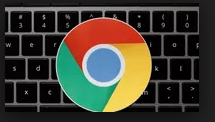Trick websites are utilizing that green https padlock to trick you
You may have heard you should look for the padlock symbol at the top of a website before entering your secret key or charge card information into an online shape. It's good natured exhortation, yet new information demonstrates it isn't sufficient to keep your sensitive information secure.
 |
| "It may look legit, but keep your guard up anyway. |
For reasons unknown, fraudsters kicked savvy and off including the padlock, which as of not long ago was a splendid green in many programs, to their websites as well. That implies a padlock is no assurance that a website is sheltered.
That is as per information from cybersecurity firm PhishLabs, first detailed by security author Brian Krebs, which demonstrates that half of every single fake page have a padlock - intended to show that the site is secure - alongside the URLs of their websites. Tricksters are exploiting the way that numerous web clients depend on the padlock symbol to choose whether to confide in a website, as indicated by an October report from the Anti-Phishing Working Group.
"Phishers are exploiting vague security informing" around the symbol, the report's creators said.
The upshot is that there's nobody trap to shield you from the clouded side of the web. You must be savvier than at any other time to stay away from con artists and check for in excess of one sign that a website is genuine.
That implies ensuring the website's URL is right and, at whatever point conceivable, composing the URL into the program as opposed to following a connection from an email. Devices like secret key supervisors and security programming can likewise help: To stop you from being tricked by an additional persuading trick website, they'll caution you when a URL doesn't coordinate the authentic website or stop you from opening an underhanded site regardless.
"Mindfulness extremely is critical," said Adam Kujawa, executive of the examination arm of cybersecurity organization Malwarebytes. "It's up to the client to state, is this really genuine?"
What the padlock truly implies
The padlock has dependably been a flawed symbol. It's there to tell you something that is explicit, and furthermore quite specialized, and that is difficult to get crosswise over with a basic picture.
The lock should tell you that a website sends and gets information from your internet browser over a scrambled association. That's it in a nutshell. You can tell a website has an encoded association since it begins with the letters https, not http. Nowadays websites utilize an encryption standard called TLS. The protected association influences it so no one to can peruse your web movement as it goes through the web's tremendous, worldwide framework.
The lock doesn't tell you anything about the legitimacy of the site.
Here's the reason an encoded association beneficial thing: it ensures that sensitive information like passwords and charge card numbers gets mixed up so just the website proposed to get it can peruse it. That is extremely essential for things like internet shopping or marking on to your bank's website.
That is additionally why it's still evident that you should never enter your information if a website doesn't have a safe association.
Be that as it may, loads of individuals don't have the foggiest idea about the lock implies something so explicit, said John LaCour, Chief Technology Officer at PhishLabs. "We've dumbed thing down to lock signifying 'safe'," he said.
Hoodlums can utilize security includes as well
Con artists who need to deceive you into entering sensitive information can put a green padlock on their websites as well, and they're doing it to an ever increasing extent. At the point when PhishLabs started gathering information in mid 2015, not exactly a large portion of a percent of phishing websites brandished a padlock. The number climbed rapidly, up to about 24 percent in late 2017 and now in excess of 49 percent in the second from last quarter of 2018.
It bodes well that tricksters would utilize the padlock to an ever increasing extent, LaCour said. That is on the grounds that it's gotten simpler and less expensive for website designers to utilize an encoded association, on account of pushes from cybersecurity specialists at Google, Electronic Frontier Foundation and other tech heavyweights.
Culprits can now effortlessly get endorsements that empower the padlock to show up and encryption to happen, and they can do it without uncovering especially about their identity.
Additionally, changes at significant programs like Chrome and Firefox have made sites without TLS encryption look considerably more perilous to clients, with an entirely obvious cautioning that the site isn't anchor. That gave additional inspiration to crooks to demonstrate the padlock on their websites, LaCour stated, and abstain from looking clearly obscure.
"The lock doesn't tell you anything about the legitimacy of the site," he said. "It just tells you that your information is scrambled as it's sent over the web."
It's not all terrible news
It's presumably for the best that tricksters are utilizing encryption on their phishing websites, said Nick Sullivan, head of cryptography at Cloudflare, an organization that, in addition to other things, enables associations to scramble their websites.
That is on the grounds that sending profitable information that anybody could block and read is dependably an awful thought, regardless of whether your quick issue is that you've recently sent off your ledger information to a con artist in another nation.
"There's nothing terrible about phishing sites having encryption," Sullivan said.
CNET's Holiday Gift Guide: The place to locate the best tech presents for 2018.
Security: Stay up and coming on the most recent in breaks, hacks, fixes and each one of those cybersecurity issues that keep you up during the evening.



0 Reviews:
Post a Comment